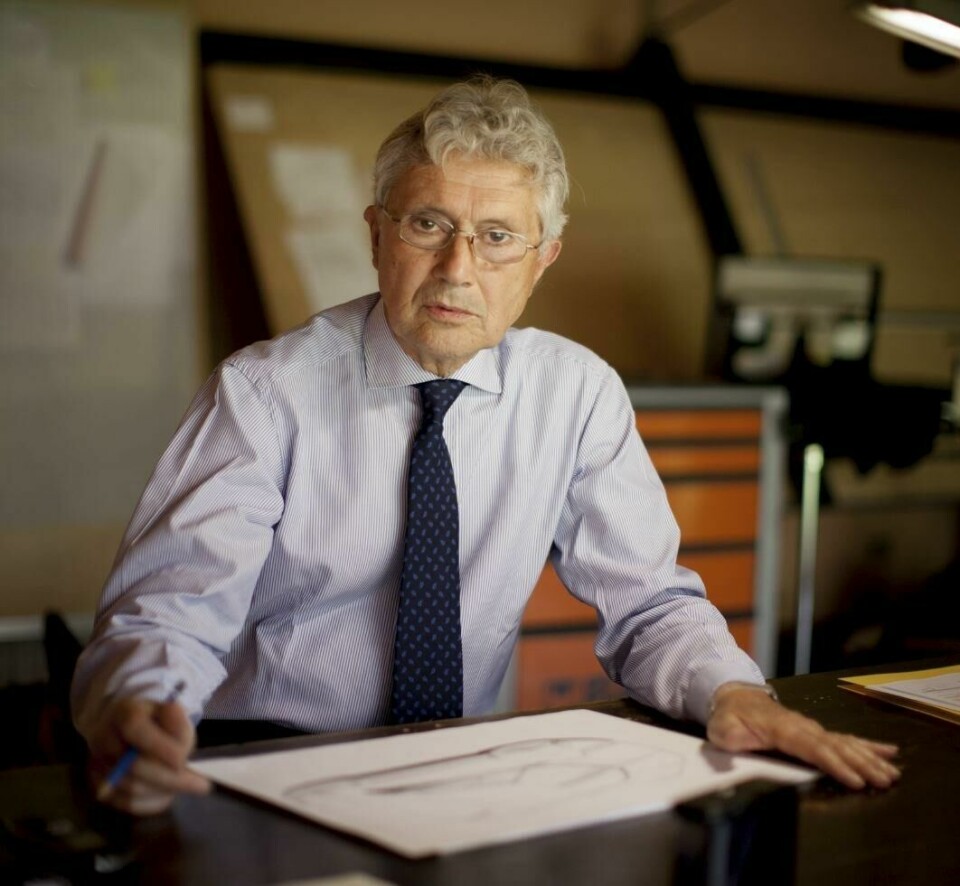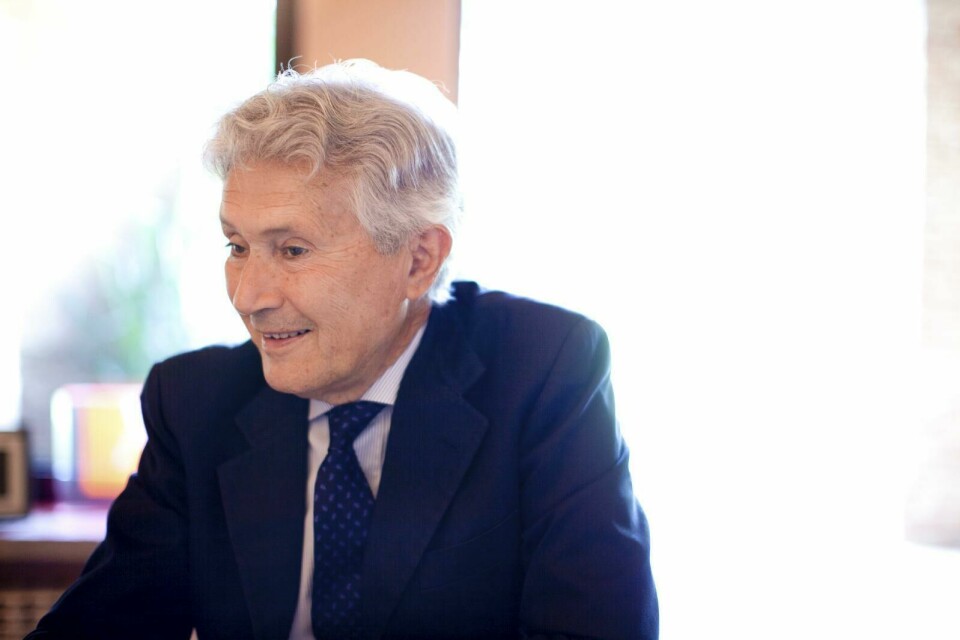
In memoriam: Marcello Gandini (1938-2024)
Car Design News pays tribute to arguably one of the greatest car designers we will ever see. A legend in the truest sense of the word: Marcello Gandini.
It is with great sadness we report the passing of Marcello Gandini, aged 85. The stature of the Italian designer within the industry cannot be overstated.
Indeed, when Car Design News started work on its inaugural Car Design Review yearbook in 2012, it was very quickly decided that Gandini should be the recipient of its first Lifetime Achievement Award. As the opening line of that feature, published in early 2013, began: “If there was an Olympic event for ‘greatest car designer of all time’ Marcello Gandini would surely be on the podium, and his medal wouldn’t be bronze.”
Born August 26, 1938 in Turin into a creative family – his father was a sometime orchestra conductor – he shunned further education and left school at 18 to pursue his strong interest in design and engineering through modifying friends’ hill climb cars. Legend has it he once sawed off the back of an Abarth 750 Zagato and soldered chicken wire mesh over the hole to see if the lighter car would go faster.
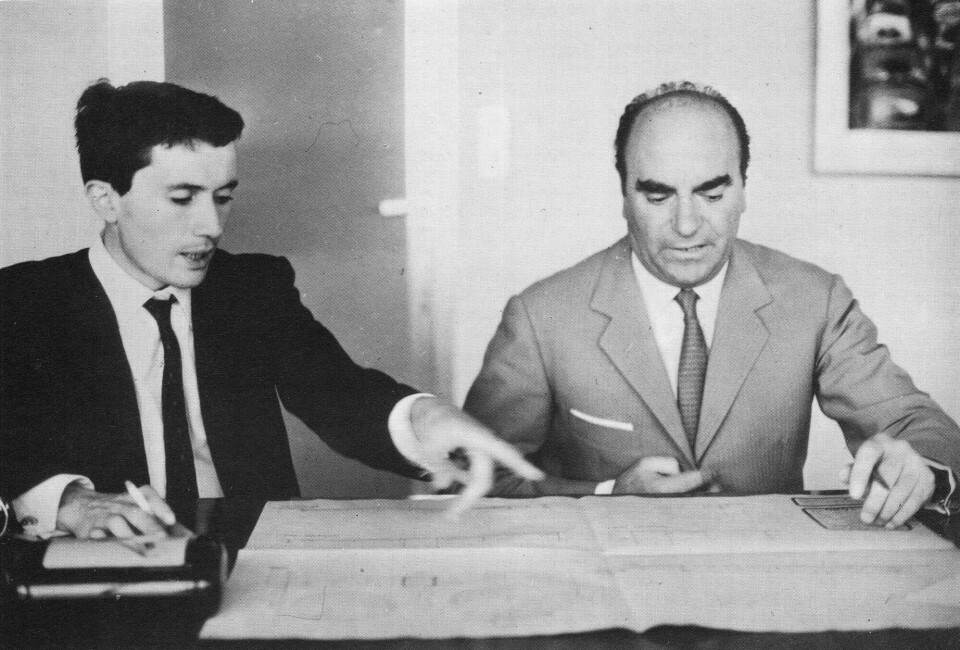
These experiments led him to freelance work, including a coupé for Italian design house Touring and then in the early 1960s, through a friend-of-a-friend, he was invited to show his work to Bertone design boss Nuccio Bertone.
His big break came when he replaced Giorgetto Giugiaro at Bertone at just 27 years old, in November 1965. Nuccio Bertone had a track record of nurturing young talent – Gandini followed at Bertone in the footsteps of not only Giugiaro, but Scaglione before that – and Nuccio allowed his protégés room, a relationship former VW Group head of design Walter de Silva described well: “Gandini was the solo violinist, but Bertone was the conductor.”
Gaining almost instant fame with the 1966 Lamborghini Miura design – considered by many as the blueprint of the modern-day supercar – he went on to invent scissor doors on the 1968 Alfa Carabo concept, later used for production on perhaps his most famous design, the 1973 Lamborghini Countach LP400. The ‘hidden’ A-pillar, constant-radius wraparound ‘motorcycle helmet visor’ windscreen is another design detail he pioneered on the 1971 Lancia Stratos rally concept – and much copied since.
He was polite, reserved and calm, but also human, taking joy from seeing his dog Baloo mooching about the courtyard
From late 1965 until 1979 the list of his design hits at Bertone is long, illustrious and incredibly diverse, in both style and brand, including for Lamborghini (Miura, Marzal, Espada, Jarama, Urraco, Countach, Bravo), Alfa Romeo (Montreal, Carabo), Lancia (Stratos HF Zero, Stratos HF,Sibilo), BMW (Garmisch, 5 Series Mk1), plus the Fiat X1/9, Audi 50, Volvo Tundra and Citroen BX.
This approach and incredibly productive track record stood him in good stead as a freelancer throughout the 1980s and 90s, where he created more groundbreaking work for mainstream brands including Renault (5 Mk2 exterior, 5 Turbo interior, Magnum truck) as well as exotica for Maserati (Shamal, Ghibli Mk2), Bugatti (EB110) and De Tomaso (Mangusta).
The design details he pioneered didn’t have to be spectacular though – many were simply functionally astute. For evidence, study the practical walk-through flat floor on the Renault Magnum truck, or the turn signal repeaters embedded within the side mirrors of the largely forgotten 1990 Maserati Chubasco prototype. The latter’s practical solution is now widely employed by many carmakers on all manner of vehicles and price points.
Gandini continued to design into the 21st century – not only cars, but also a simplified new manufacturing process – from his tastefully restored 17th century home and studio on the outskirts of Turin. Lucky enough to have interviewed him there in 2011, it’s a day I will never forget. Driving to the end of an anonymous narrow gravel roadway in a small village, a maid in an immaculate navy polka-dot dress opened the old gates to a large house and led us to Gandini himself.
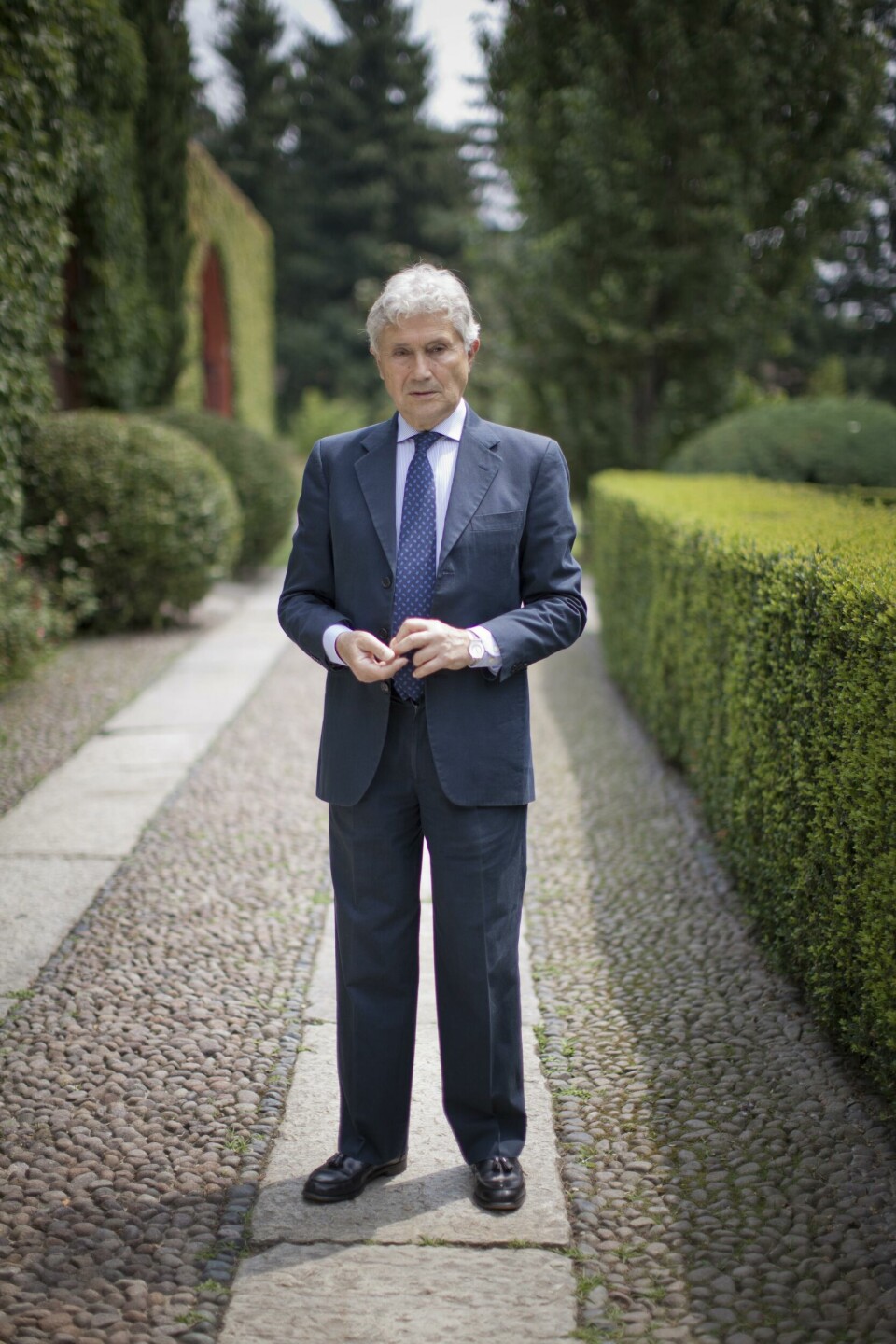
Smartly suited, but in an understated, rather than flamboyant way, he was polite, reserved and calm, but also human, taking joy from seeing his German Shepherd dog Baloo (named after the bear from the Jungle Book) mooching about in the courtyard.
Only a few pencils and rubbers sat on his studio desk alongside assorted car parts, while against each main wall stood huge vertically-mounted draughtsman’s tables. A large bundle of rolled up sketches and blueprints sat in a corner and a few scale models were dotted about – one with a cover on it – like it was still awaiting its official unveil. No computer in sight.
Given his historical position and successful career a generation before the current crop of 40-, 50- and 60-something year old heads of car design, his influence has been immense on contemporary car design.
Gandini and his famous cars are routinely cited as the reason why many of them became car designers at all. As Laurens van den Acker, chief design officer at Renault Group, has said: “My boyhood hero. His supercars inspired me to find my way into this profession.” Or Karim Habib, Kia design EVP: “I always loved Gandini’s work because it was odd. The original Countach concept was my ‘poster car’ in childhood, as cheesy as that sounds.”
Or Flavio Manzoni, chief design officer at Ferrari, who expressed his opinion even more simply many years ago: “Gandini is probably the greatest car designer ever.”
You have to make something that makes people go ‘wow’ and really surprises. That is the mother of success
As for the man himself, he preferred to look forward rather than back, rarely gave interviews and when he did, was enigmatic, unassuming and humble – not what you might expect from the creator of some of the world’s most flamboyant and futuristic supercars. Trying to gain insights into perhaps elaborate inspirations proved elusive on many of his signature achievements.
The infamous ‘eyelashes’ on the Miura were he says, simply an aesthetic device to mask the fact that the headlamps were borrowed from another Bertone car: “There was no intention of creating eyelashes,” he said. “It was just a way of finding original design solutions. The headlights were from the Fiat 850 Spider and I didn’t want them to be recognisable.”
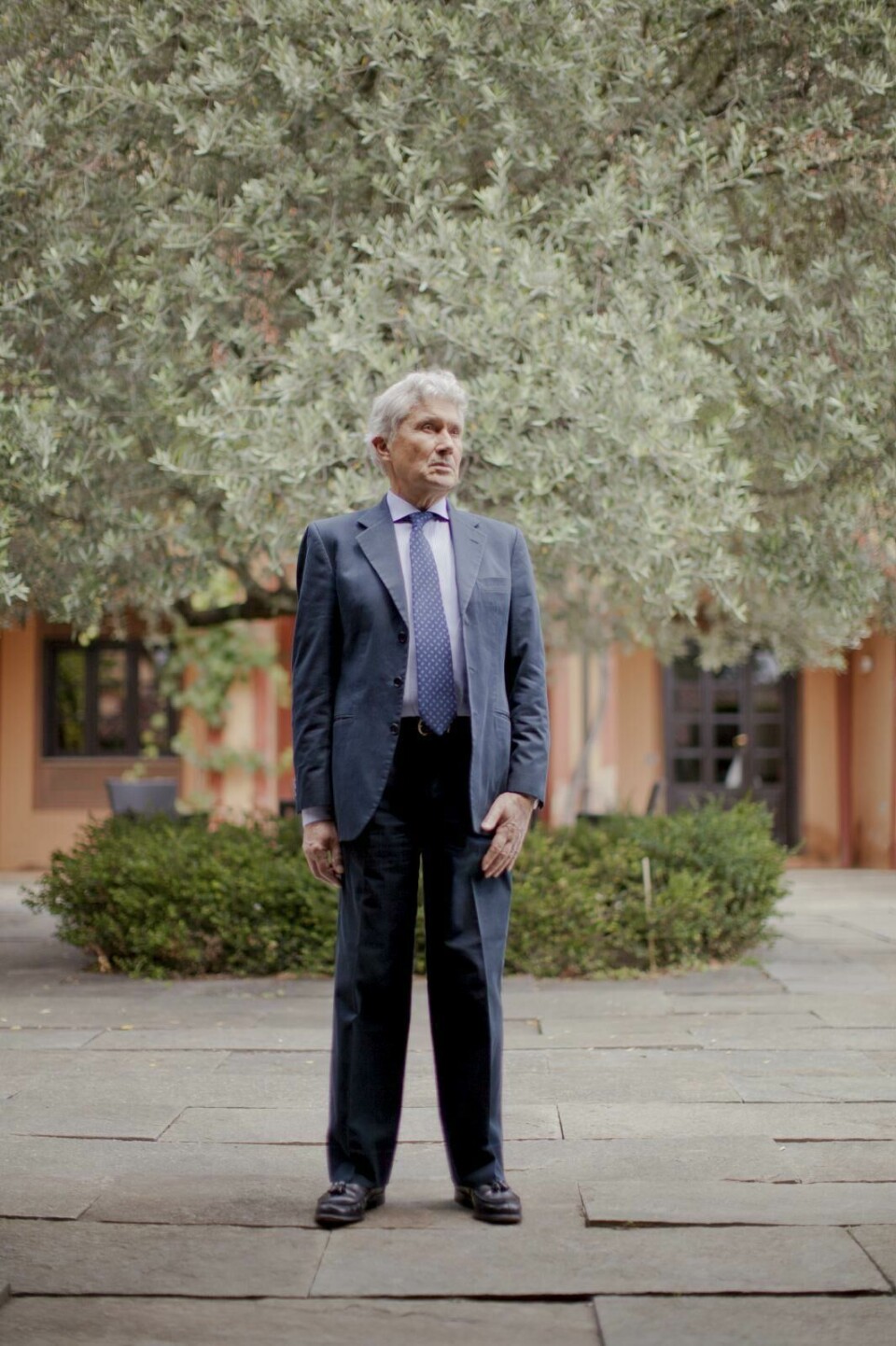
Was he indeed the first man to dream up the motorcycle helmet visor-style wraparound windscreen on the 1971 Lancia Stratos, that went on to be a huge rally success?
“It was the first time I did it and I’m not aware of anyone else doing it before,” he answered. “But I just wanted to make a car that attracted people regardless of whether it won races. There is a risk that a racing car might not win, so what’s the point of it? But if it’s aesthetically appealing and doesn’t win, it’s still an appealing car.”
When I asked him to pick a favourite from his six-decade career, the question got suitably short shrift.
He acknowledged the Lamborghini Countach as his best-known but told the story of turning down the offer of owning the very last one off the production line by simply saying, “I didn’t want to end up having to polish it all the time.”
Even as recently as January 2024 he was still making the news, after being recognised by the Polytechnic University of Turin in Italy with an honorary degree in mechanical engineering and made a moving speech full of insight and originality, which you can read in full on CDN here. The tenor of the speech was very much in line with how the man conducted himself in person, with quiet dignity and thoughtfulness.
Gandini was a true car design legend and there will never be another like him. Why? Perhaps the following quote from him – and one that still sticks in my head after all these years – provides a partial answer: “What really drove me and inspired me was understanding that you have to make something that makes people go ‘wow’ and really surprises. That is the mother of success.”
